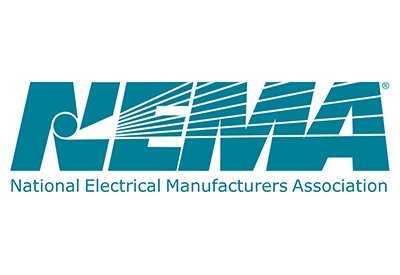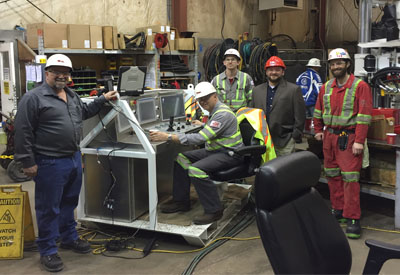CAN/ULC-S576-14, Standard for Mass Notification System Equipment and Accessories

Recent events in Southern Alberta, which resulted in an Amber Alert being issued for Alberta, Saskatchewan, British Columbia, and Montana,reiterate the need for mass communication. Disasters, terrorist attacks and other major incidents need an effective incident response in order to save lives, mitigate harm and damage, and ensure a base level of continuity of essential societal functions. The protection of people at risk from harm is an important part of an incident response.
This first edition national standard, CAN/ULC-S576-14, Standard for Mass Notification System Equipment and Accessories, was published in September 2014.The standard covers discrete electrical control units, communication units, transport products which manipulate the data packets, interfaces, and accessories for mass notification systems.The products covered by this standard are intended to be used in combination with other appliances and devices to form an emergency communication and/or mass notification system. These products are intended to communicate critical information within buildings and/or outdoor areas about emergencies including but not limited to terrorist activities, hazardous chemical releases, severe weather, fire, Amber Alert, and other situations that may endanger the safety of the occupants of an area or facility. Communication is through voice, audible, and/or visual instructions.
Based on this standard, a mass notification system is described as a configuration of components and interfaces that are used to communicate information to occupants in abuilding, area site, or other space about emergency conditions. Systems may consist of equipment thatcan reproduce live and recorded voice messages, tones and visual indicators such as strobe lights andvisual displays.
A mass notification can be described as In-Building, Wide Area or simply be specific to Distributed Recipients. A mass notification system could also beshared systems with non-emergency, security, building controls, and other non-fire equipment.
An In-Building mass notification system is a system used to provide information and instructions to occupants in a building or other space using voice communication, visible signalling and other communication methods.
This system could include but would not be limited to
• fire voice speakers
• flat panel displays
• LED displays
• PA/intercom
• network PCs
• phone systems
• wired and wireless buttons
• indoorcamera systems
A Wide Area mass notification system provides real time information to areas, including outdoor, in a contiguous or non-contiguous campus, region or global geographical setting. The area is not defined and therefore could extend globally.
This system tends to include the following:
• sirens
• outdoor PA systems
• high power speaker arrays
• outdoor strobes
• electronic signage
• emergency call stations
• outdoorcamera systems
A Distributed Recipient mass notification system is a system intended tocommunicate to targeted individuals that may not be in a contiguous area.
This system can be best described as being at your side.
• pagers
• cell phones / smart phones
• personal emails
• IM (Instant Message) alerts
• duress alarms
• hand-held radios
• mass dialling systems
• computerpop-ups
Each application of a mass notification system should be specific to the nature and anticipated risks of each facility for which it is designed. For example, a cell phone text message should not be relied upon for emergency situations. An emergency response plan needs to consider both fire and non-fire emergencies, performance-based designs and a full risk analysis as the basis for development.
The CAN/ULC-S576 standard includes many physical requirements for enclosures, branch circuit and other wiring connections, internal wiring, protective devices, components and batteries, just to mention a few. Performance requirements within the standard include operational tests for In-Building, Wide Area and Distributed Recipient mass notification systems, which cover interfaces, power supplies, message communications, monitoring for integrity, security, and data protection.
Additional performance tests are also included to cover the electrical aspects of these systems; for example, harmonic current tests, charging current test, overload test, leakage current test, and others.
It should be noted that an amendment is currently being drafted to align the Canadian requirements with UL2075. Copies of this standard are all available from the ULC Online Store or from Other resellers. Visit our website at: http://canada.ul.com/ulcstandards/aboutus/salesofulcstandardsmaterials/
In the international arena, there are several standards developed by ISO TC292 (Security and Resilience) relating to incidence response.
ULC Standards is engaged in the work of ISO TC292:
• ISO 22320, Societal Security — Emergency management — Requirements for command and control. This international standard specifies requirements for effective incident response and provides the basics for command and control, operational information, coordination, and cooperation within an incident response organization. It enables public and private incident response organizations to improve their capabilities in handling all types of emergencies.
• ISO 22324, Societal security — Emergency management — Guidelines for colour coded alerts. This international standard provides guidelines for the use of colour codes to inform people at risk as well as first response personnel about danger and the severity of a situation to solicit them to seek more information or to take appropriate safety actions.
• ISO 22322, Societal security — Emergency management — Public warning. Public warnings, through a combination of prior notifications and alerts, enable people at risk to take appropriate and timely actions to protect their safety. This international standard provides guidelines for developing, managing and implementing public warning before, during and after incidents.
We have all noticed that it is becoming a smaller world. Events that we would have never heard about less than a century ago are now front and centre within the media and affect us in far greater numbers. Being able to react will be measured in how fast we can communicate in mass to those affected.
Pierre McDonald, CET, is Senior Regulatory Affairs Representative/Répresentant Principal, Affaires Réglementaires, Underwriters Laboratories of Canada Inc. Based in St. Albert, AB, Pierre has been a member of the Canadian Electrical Code Part 1 technical committee as well as several subcommittees including serving as Chair of Sections 6 and 76 and as a member representing regulators on several other CSA committees. Pierre is still active with code development and interpretation.
Other articles from Pierre McDonald:
2015 CE Code: Changes on “Approved Electrical Equipment”
Section 62: Fixed Electric Heating Systems
Now Available: CAN/ULC Standard on Electric Utility Workplace Electrical Safety
Establishing When the CE Code Becomes Mandatory
Canadian CE Code Changes: Section 20 and More
Meeting National Building Code of Canada Requirements
Conductor Ampacities and Their Temperature Rating
Codes and Standards – Provincial Legislation and the Administrative Requirements of the CE Code















